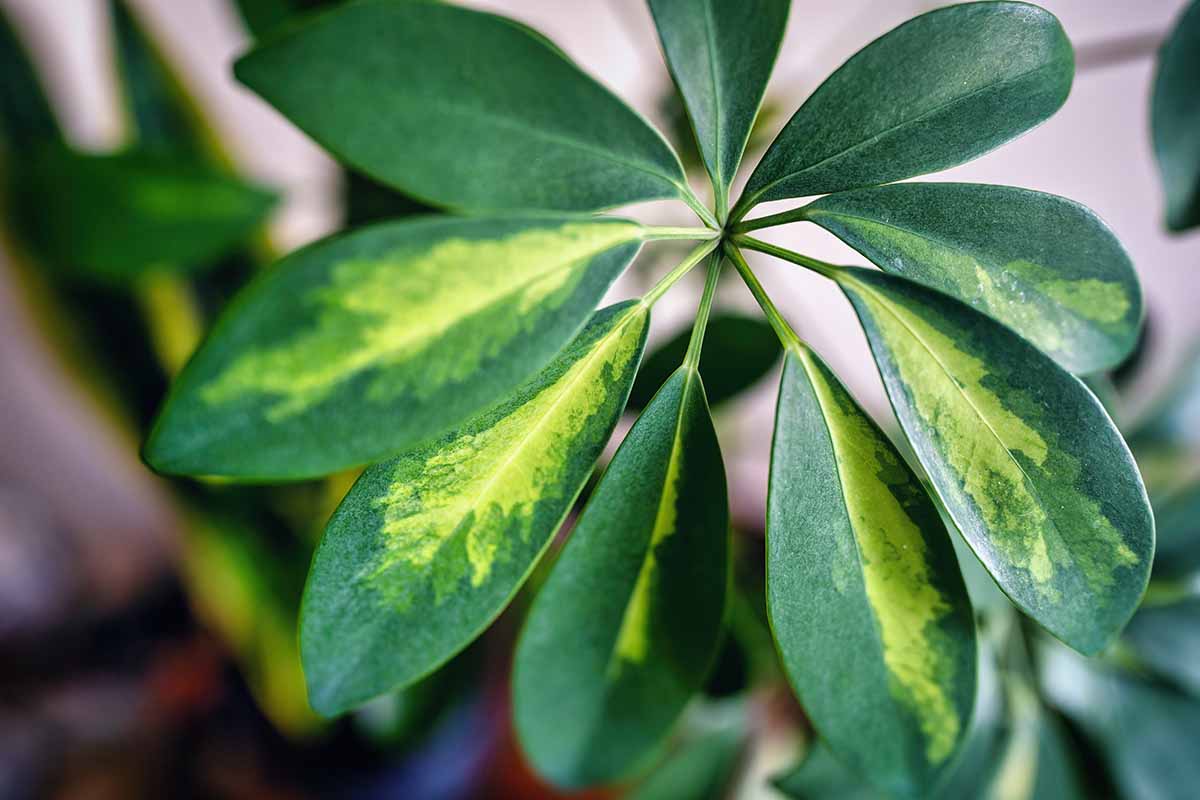
The Dwarf Umbrella Tree, also known as Schefflera arboricola, is a fascinating plant that has captured the attention of plant enthusiasts around the world. This evergreen shrub, native to Taiwan and Hainan, China, is renowned for its unique and enigmatic characteristics.
In this article, we will uncover 14 intriguing facts about the Dwarf Umbrella Tree that will leave you amazed and eager to learn more. From its captivating appearance to its impressive adaptability, this plant has a lot to offer. So, let’s dive into the world of the Dwarf Umbrella Tree and discover the hidden wonders it holds.
Key Takeaways:
- The Dwarf Umbrella Tree is a popular indoor plant native to Madagascar, known for its umbrella-shaped leaves and air-purifying qualities. It’s easy to care for and adds a tropical touch to any space.
- While the Dwarf Umbrella Tree is a resilient and low-maintenance plant, it’s important to keep it away from pets as it can be toxic when ingested. Propagation through stem cuttings allows for easy expansion of your plant collection.
The Dwarf Umbrella Tree is native to Madagascar.
The Dwarf Umbrella Tree, scientifically known as Schefflera arboricola, is a tropical plant that is indigenous to the island of Madagascar in the Indian Ocean.
It belongs to the family Araliaceae.
The Dwarf Umbrella Tree is a member of the Araliaceae family, which also includes other popular houseplants like the Ginseng Ficus and the Ming Aralia.
The plant gets its name from its distinctive leaf shape.
The leaves of the Dwarf Umbrella Tree are usually composed of multiple leaflets that resemble the shape of an umbrella, hence its unique name.
It is a popular choice for indoor gardening.
Due to its attractive foliage and ease of care, the Dwarf Umbrella Tree has become a popular choice among indoor gardeners and plant enthusiasts.
The Dwarf Umbrella Tree can grow up to 8 feet in height.
Under optimal conditions, the Dwarf Umbrella Tree has the potential to reach a height of up to 8 feet, although it is often maintained at smaller sizes for indoor cultivation.
It thrives in bright, indirect light.
The Dwarf Umbrella Tree prefers bright, indirect light but can tolerate lower light conditions, making it adaptable to different indoor environments.
Watering should be done moderately.
It is important to water the Dwarf Umbrella Tree moderately, allowing the top inch of soil to dry out between waterings to prevent overwatering and root rot.
The plant requires regular pruning to maintain its shape.
Pruning is necessary to control the height and shape of the Dwarf Umbrella Tree and also to remove any dead or yellowing leaves for optimum plant health.
It is considered an air-purifying plant.
The Dwarf Umbrella Tree helps to improve indoor air quality by filtering out toxins such as formaldehyde, benzene, and xylene.
The plant is toxic to pets when ingested.
The leaves and stems of the Dwarf Umbrella Tree contain calcium oxalate crystals, which can cause irritation and discomfort if ingested by cats, dogs, or other pets.
Propagation can be done through stem cuttings.
The Dwarf Umbrella Tree can be propagated through stem cuttings, allowing you to create new plants from the existing ones.
It is known for its resilience and adaptability.
The Dwarf Umbrella Tree has a reputation for being a hardy plant that can withstand various environmental conditions, making it suitable for both novice and experienced plant owners.
It is a low-maintenance plant.
The Dwarf Umbrella Tree requires minimal care and attention, making it a great choice for those who want to enjoy the beauty of indoor plants without the hassle of high maintenance.
The plant’s vibrant foliage adds a touch of tropical beauty to any space.
With its glossy, vibrant green leaves, the Dwarf Umbrella Tree brings a touch of the tropics to any indoor space, creating a visually appealing and calming atmosphere.
Conclusion
In conclusion, the Dwarf Umbrella Tree is truly a fascinating plant with its unique characteristics and enigmatic facts. From its charming appearance to its ability to thrive in different environments, this plant has captured the attention of many plant enthusiasts. Its versatility as an indoor or outdoor plant makes it a popular choice for those who want to add a touch of natural beauty to their surroundings. Whether you are a beginner or an experienced gardener, the Dwarf Umbrella Tree is a perfect addition to any plant collection. So, go ahead and bring home this captivating plant to experience the joy of nurturing and admiring its beauty.
FAQs
Q: How tall does the Dwarf Umbrella Tree grow?
A: The Dwarf Umbrella Tree typically grows to a height of 2-3 feet indoors, but it can reach up to 6 feet outdoors.
Q: What kind of lighting does the Dwarf Umbrella Tree prefer?
A: The Dwarf Umbrella Tree prefers bright indirect light, although it can tolerate lower light conditions.
Q: How often should I water my Dwarf Umbrella Tree?
A: It is best to allow the top inch of the soil to dry out before watering the Dwarf Umbrella Tree. Overwatering can lead to root rot, so it’s important to ensure proper drainage.
Q: Can I keep the Dwarf Umbrella Tree in my office?
A: Yes, the Dwarf Umbrella Tree is an excellent choice for offices as it can tolerate low-light conditions and can help improve air quality.
Q: Does the Dwarf Umbrella Tree require any special care?
A: The Dwarf Umbrella Tree is a relatively low-maintenance plant. However, it is recommended to wipe the leaves with a damp cloth occasionally to remove any dust or pests.
Q: Can I propagate the Dwarf Umbrella Tree?
A: Yes, the Dwarf Umbrella Tree can be propagated through stem cuttings. Simply take a cutting with at least two nodes, remove the bottom leaves, and place it in water or well-draining soil.
Q: Is the Dwarf Umbrella Tree toxic to pets?
A: Yes, the Dwarf Umbrella Tree is considered toxic to pets, so it is important to keep it out of their reach.
Dwarf Umbrella Trees aren't only fascinating houseplants, they're also excellent for indoor gardening. Their resilience and air-purifying properties make them perfect companions alongside other tropical plants like bromeliads. Whether you're a seasoned plant enthusiast or just starting your journey into the world of greenery, exploring the unique characteristics of various plant species is an endlessly rewarding experience. So why not dive deeper into the captivating world of houseplants and discover even more intriguing facts?
Was this page helpful?
Our commitment to delivering trustworthy and engaging content is at the heart of what we do. Each fact on our site is contributed by real users like you, bringing a wealth of diverse insights and information. To ensure the highest standards of accuracy and reliability, our dedicated editors meticulously review each submission. This process guarantees that the facts we share are not only fascinating but also credible. Trust in our commitment to quality and authenticity as you explore and learn with us.


